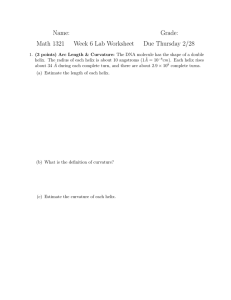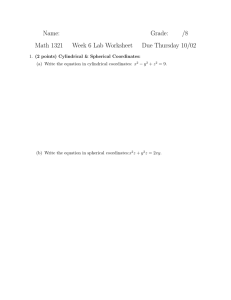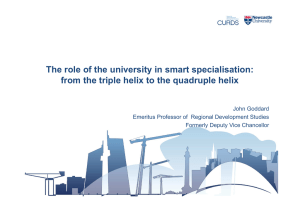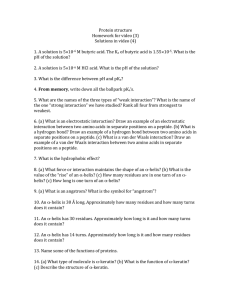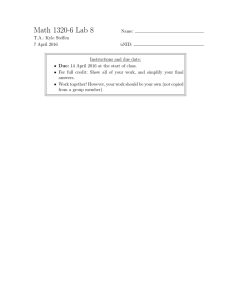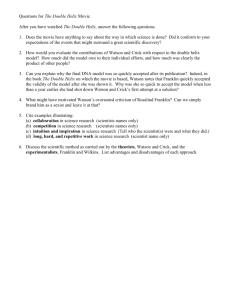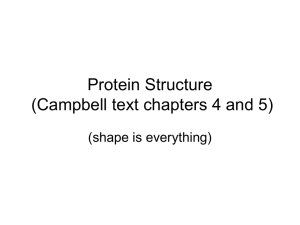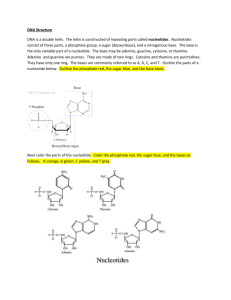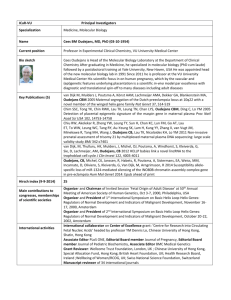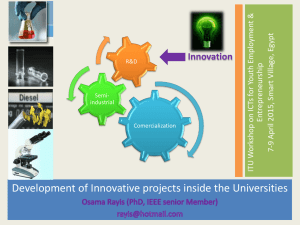PH 2901
advertisement
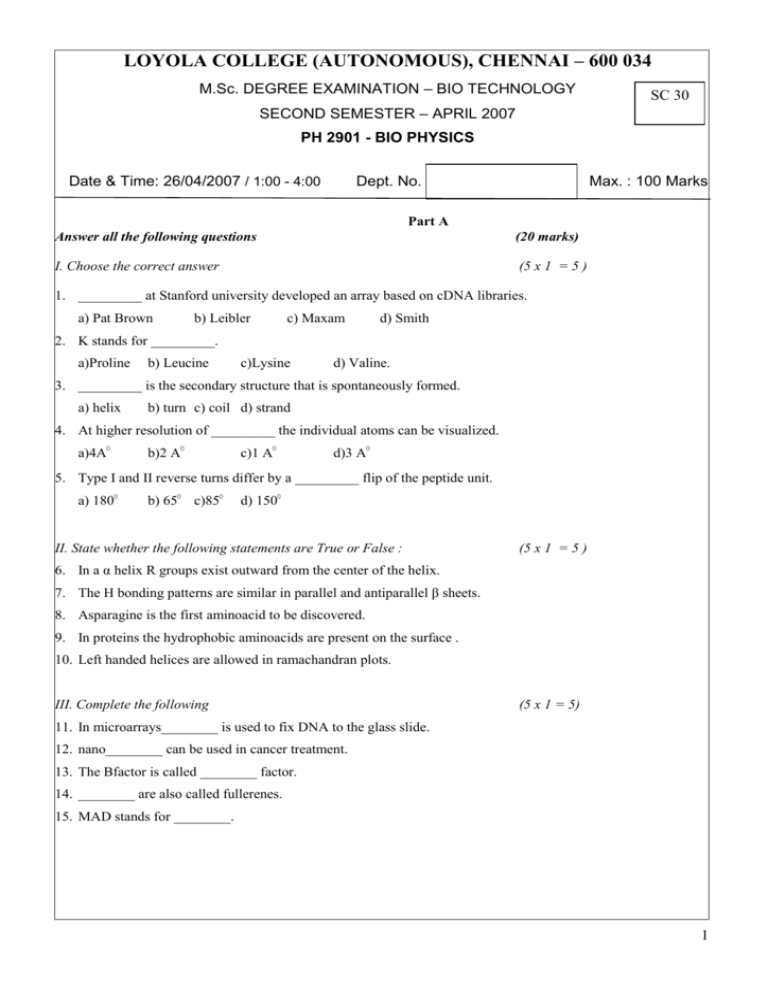
LOYOLA COLLEGE (AUTONOMOUS), CHENNAI – 600 034 M.Sc. DEGREE EXAMINATION – BIO TECHNOLOGY SC 30 SECOND SEMESTER – APRIL 2007 PH 2901 - BIO PHYSICS Date & Time: 26/04/2007 / 1:00 - 4:00 Dept. No. Max. : 100 Marks Part A Answer all the following questions (20 marks) I. Choose the correct answer (5 x 1 = 5 ) 1. _________ at Stanford university developed an array based on cDNA libraries. a) Pat Brown b) Leibler c) Maxam d) Smith 2. K stands for _________. a)Proline b) Leucine c)Lysine d) Valine. 3. _________ is the secondary structure that is spontaneously formed. a) helix b) turn c) coil d) strand 4. At higher resolution of _________ the individual atoms can be visualized. a)4A0 b)2 A0 c)1 A0 d)3 A0 5. Type I and II reverse turns differ by a _________ flip of the peptide unit. a) 1800 b) 650 c)850 d) 1500 II. State whether the following statements are True or False : (5 x 1 = 5 ) 6. In a α helix R groups exist outward from the center of the helix. 7. The H bonding patterns are similar in parallel and antiparallel β sheets. 8. Asparagine is the first aminoacid to be discovered. 9. In proteins the hydrophobic aminoacids are present on the surface . 10. Left handed helices are allowed in ramachandran plots. III. Complete the following (5 x 1 = 5) 11. In microarrays________ is used to fix DNA to the glass slide. 12. nano________ can be used in cancer treatment. 13. The Bfactor is called ________ factor. 14. ________ are also called fullerenes. 15. MAD stands for ________. 1 IV. Answer the following each within 50 words . (5 x 1 = 5) 16. TΨCG loop. 17. Greek key motif. 18. Quantum effect. 19. Writhing number. 20. Disulfide bonds. Part B Answer any five of the following each in about 350 words. (5 x 8 = 40) 21. Give an account on Rama chandran plots. 22. Explain the topology of DNA supercoiling. 23. Explain Multiwavelength anomalous Diffraction in detail. 24. Discuss about Multiple Isomorphous replacement. 25. Explain MALDI-TOF in detail. 26. Discuss about the factors affecting the stability of a helix. 27. Discuss the importance and applications of biophysics in biotechnology. 28. Explain the principle and applications of STM . Part C Answer the following, each in about 1500 words. Draw necessary diagrams (2 x 20 = 40) 29. a) Explain in detail the various weak interactions that stabilize the protein structures. OR b) Explain the bottum up methods in nanotechnology. 30. a) Discuss about the gene expression studies and their applications. OR b) Explain how NMR can be used the determination of protein structures. ***** 2

